Kubernetes: Definition, Architecture, Use Cases, Benefits and Limitations
Kubernetes (or K8s, sometimes written as K8 Kubernetes) is the industry standard platform for running containerized applications at scale, but many teams still struggle to understand what it is and when to use it. This article explains what Kubernetes is, how it works, how its architecture and components fit together, and where a Kubernetes tutorial or hands-on lab usually fits in your learning path. It also covers how Kubernetes uses containers and Docker, the difference between Docker and Kubernetes, storage and networking basics, the main Kubernetes use cases, its role in cloud-native and DevOps, plus the key benefits, limitations, and challenges.
What is Kubernetes?
Kubernetes (or K8s) is an open source orchestration platform for running and managing containerized applications at scale. It groups machines into a Kubernetes cluster of nodes managed by a control plane and the Kubernetes API, then automatically handles deployment, scaling, restart, and load balancing across multiple instances of your workloads. Applications run as pods created from a container image (often built with Docker) and are exposed via a Kubernetes Service and optional Ingress for external access. As a flagship project of the Cloud Native Computing Foundation (CNCF), Kubernetes has become the standard way DevOps teams operate applications consistently across public cloud and on-premises infrastructure.
Traditional deployment VS Deployments with Kubernetes: What is the difference
Kubernetes replaces host-centric releases with a declarative, platform-driven model. Instead of deploying to each virtual machine, you use Kubernetes to describe the desired state and let the cluster automate scheduling, scaling, and recovery, supported by a shared ecosystem and global Kubernetes community.
How does Kubernetes work?
Kubernetes, also known as K8s, works by turning a cluster of machines into a single, programmable platform for container orchestration, where the scheduling, scaling, and lifecycle management of containers are automated and policy-driven. You declare the desired state of your application deployment, and the Kubernetes control plane continuously makes the real state of the cluster match what you asked for.
How Kubernetes works – key points
How does Kubernetes manage storage and networking for applications?
Kubernetes manages storage and networking by turning the underlying Kubernetes infrastructure into standard, declarative primitives that applications can request without caring about specific disks or networks.
Storage
- Persistent volumes and claims
Kubernetes provides PersistentVolume (PV) and PersistentVolumeClaim (PVC) objects so a container or multiple containers can use durable storage without knowing the backend. - Dynamic provisioning and policies
With StorageClass, Kubernetes allows dynamic volume creation based on the resource requirements of each container, while controllers or operators track resource allocation and enforce storage policy.
Networking
- Pod networking and flat address space
Core Kubernetes uses CNI plugins so every pod gets an IP in a flat network, making east–west traffic inside the cluster predictable. - Service discovery and load balancing
A Service gives a stable IP and DNS name to one or multiple containers, and Kubernetes supports load balancing across matching pods as they move or restart. - Ingress and service mesh
Ingress exposes HTTP or HTTPS from outside the cluster, while a service mesh builds on these primitives and builds upon best-of-breed ideas and practices to add mTLS, traffic shaping, and observability across services.
What is the architecture of Kubernetes?
The architecture of Kubernetes is a control plane plus worker-node design that turns a cluster into a single cluster management platform, consistent across clouds and on-prem because the same Kubernetes code underlies most Kubernetes offerings and versions of Kubernetes.
Here are the core building blocks of the Kubernetes architecture:
What are the main components of Kuberbnetes?
The main components of Kubernetes are the control plane, the worker nodes, and a small set of core objects that define how your applications run. These components are consistent across most enterprise platforms, including those evaluated in the Gartner® Magic Quadrant™ for container management, which is why Kubernetes feels familiar wherever you deploy it.
The following points are related to the main components of Kubernetes.
What are the key benefits of Kubernetes?
Kubernetes provides a standard, automated platform for running applications at scale, which is why it underpins many cloud services and appears in reports like the 2025 Gartner® Magic Quadrant™ for container management.
The following points are related to the key benefits of Kubernetes.
- Scalability and elasticity – You scale services up or down declaratively or via autoscaling, so applications handle traffic spikes without constant manual tuning.
- High availability and self healing – Kubernetes restarts failed containers, replaces unhealthy pods, and reschedules workloads on healthy nodes, improving uptime.
- Portability across environments – The same manifests and container images, which package your application code and its dependencies in a portable format, run on-prem and across clouds, reducing provider lock-in.
- Efficient use of infrastructure – Kubernetes schedules workloads based on CPU and memory requests, increasing utilization while respecting limits and guarantees.
- API-driven automation and ecosystem – A consistent Kubernetes API enables GitOps and CI/CD; a large community and ecosystem make it easy to find information about Kubernetes and learn more about Kubernetes as your needs grow.
What are the limitations and challenges of Kubernetes?
Kubernetes delivers strong scalability and reliability, but it is not a free win. It shifts complexity from individual servers to a powerful, distributed control plane that demands new skills, careful configuration, and ongoing maintenance.
The following points are related to the main limitations and challenges of Kubernetes.
- Operational complexity
You are effectively running a distributed platform (control plane, networking, storage, security), not just a simple runtime. Misconfiguration at this layer can impact every workload in the cluster. - Steep learning curve
Developers and operators must understand pods, deployments, services, ingress, RBAC, resource limits and Kubernetes’ declarative model before they can use it safely and efficiently. - Difficult troubleshooting
Failures can span application, container, network, storage, and cluster state. Issues like misconfigured probes, DNS problems, or incorrect limits often take more time and expertise to isolate. - Cost and resource management risk
Poorly chosen requests/limits, idle workloads, or oversized clusters can drive up infrastructure costs, even though Kubernetes is designed to improve utilization. - Security and governance overhead
Features such as RBAC, network policies, secrets management, and admission controls are powerful but complex. Weak policies or defaults can leave the cluster over-privileged or exposed. - Stateful and legacy workloads are harder
Databases and legacy applications can run on Kubernetes, but they require careful storage design, backup, and failover planning. For many teams, managed services still remain simpler for critical stateful systems. - Frequent change and upgrade burden
Regular Kubernetes version releases, API deprecations, and fast-moving ecosystem components (ingress controllers, operators) create continuous upgrade and compatibility work.
How does Kubernetes use containers and Docker?
Kubernetes uses containers as the basic unit of execution and treats tools like Docker as one of several possible container runtimes that actually run those containers on each node.
The following points are related to how Kubernetes uses containers and Docker.
- Containers as the workload unit
Kubernetes schedules and manages pods, and each pod wraps one or more containers that share network and storage. From Kubernetes’ perspective, the pod is the object it places on nodes; the container is the process that actually runs your application code. - Docker as a container runtime (not the platform)
Docker originally provided both the image format and the runtime that starts containers. Kubernetes plugs into the runtime layer: it tells the node’s runtime (historically Docker, now typically containerd or another compliant runtime) which images to pull and which containers to start or stop. - Images built with Docker run unchanged on Kubernetes
You build a container image (often using docker build), push it to a registry, and reference that image name in a Kubernetes manifest. Kubernetes then instructs the runtime to pull that image and run it inside a pod, without you changing the image for Kubernetes specifically. - Kubernetes adds orchestration around Docker containers
Where Docker alone starts a single container or a simple compose stack, Kubernetes layers on scheduling, scaling, rolling updates, self-healing, and service discovery, using containers as the execution primitive but managing them as part of a larger, declarative cluster. - Runtime-agnostic by design
While Docker played a key historical role, Kubernetes is runtime-agnostic as long as the runtime implements the required interface (for example, containerd or CRI-O). That means any OCI-compliant image you built with Docker can be orchestrated by Kubernetes, even if the node no longer runs the full Docker Engine.
What is the difference between Docker and Kubernetes?
Docker and Kubernetes solve different problems, so the common “Kubernetes vs Docker” question is really about orchestration versus single-host container runtime: Docker focuses on packaging and running containers on a single machine, while Kubernetes focuses on orchestrating many containers across a cluster with built-in scaling and self-healing.
The following points are related to the key differences between Docker and Kubernetes.
What are the main Kubernetes use cases?
Kubernetes is mainly used when you need to run many containerized services reliably across multiple machines, with consistent deployment, scaling, and recovery across environments.
The following points are related to the main Kubernetes use cases.
- Microservices and APIs in production
Running many microservices and HTTP/gRPC APIs with rolling updates, traffic routing, and horizontal scaling across a cluster. - Web applications and SaaS products
Hosting web frontends, mobile backends, and SaaS platforms that need high availability, zero- or low-downtime releases, and rapid feature delivery. - CI/CD and GitOps delivery platform
Using Kubernetes as the standard deployment target for pipelines and GitOps, so the same manifests define staging, pre-prod, and production. - Batch jobs, data processing, and ML workloads
Running batch jobs, ETL pipelines, and ML training/inference as short-lived pods on a shared compute pool instead of dedicated servers per team. - Hybrid and multi-cloud portability
Standardizing on Kubernetes so the same images and configs run on-prem, in a private cloud, and across multiple public clouds for portability and DR. - Internal developer platforms on Kubernetes
Powering internal PaaS/IDP layers where developers push simple app specs, while the platform team handles routing, security, and resource policies on top of Kubernetes.
How is Kubernetes used in cloud-native and DevOps environments?
In cloud-native and DevOps environments, Kubernetes is the standard platform to build, deploy, and operate containerized applications using automation and declarative configuration instead of manual server management.
The following points are related to how Kubernetes is used in cloud-native and DevOps environments.
- Deployment target for CI/CD
Pipelines build container images, run tests, and deploy to Kubernetes using manifests or Helm charts, so every change flows through the same automated path. - Declarative and GitOps driven
Teams store Kubernetes resources (Deployments, Services, Ingress, ConfigMaps) in Git and use GitOps tools to sync clusters, making Git the source of truth for app and environment state. - Platform for microservices
Cloud-native microservices run as pods behind Services and Ingress, with Kubernetes handling service discovery, load balancing, and rolling updates. - Consistent environments
The same Kubernetes specs define dev, staging, and production, reducing drift and “works on my machine” issues. - Automated reliability
Kubernetes provides autoscaling and self-healing—restarting failed pods, rescheduling workloads, and scaling replicas based on metrics—which aligns directly with DevOps goals of resilience and rapid delivery.
FAQ’s
Q1. Is Kubernetes a coding language?
Ans: No, Kubernetes is not a coding language. It is an open source container orchestration platform used to manage containerized applications across a cluster. You interact with Kubernetes mostly through YAML configuration files, kubectl commands, and its API, not by writing application code in it. For clarity, the common Kubernetes pronunciation is “koo-ber-net-eez.”
Q2.Can I run Kubernetes without Docker?
Ans: Yes, you can run Kubernetes without Docker. Kubernetes uses a container runtime behind the scenes, and modern clusters typically use containerd or CRI-O instead of the full Docker Engine, as long as they implement the Kubernetes Container Runtime Interface (CRI). The core project is open source, so Kubernetes is free to use; your main costs come from the underlying infrastructure and any managed Kubernetes services you choose.
Q3.Is Kubernetes only for containers?
Ans: No, Kubernetes is not only for containers, but containers are its primary focus. Kubernetes is designed to orchestrate containerized applications, yet you can extend it with tools like operators or projects such as KubeVirt to manage virtual machines and other external resources through the same Kubernetes API.
Q4.What is a Kubernetes cluster?
Ans: A Kubernetes cluster is a group of machines (nodes) that run containerized applications managed by a control plane. The control plane decides where pods run, while worker nodes provide the compute to execute them.
Q5.How do I access applications running in a Kubernetes cluster?
Ans: Inside the cluster, apps are reached via a Service (stable virtual IP/DNS). From outside, you usually expose them through Ingress, a load balancer, or a NodePort, depending on your cloud or on-prem networking setup.
Q6.How many nodes do I need in a Kubernetes cluster?
Ans: For production, you typically run at least three control-plane nodes and multiple worker nodes for redundancy and scaling. Small labs or tests can use a single-node cluster, but it is not suitable for high availability.






.webp)
.webp)
.webp)







%20(1).png)



